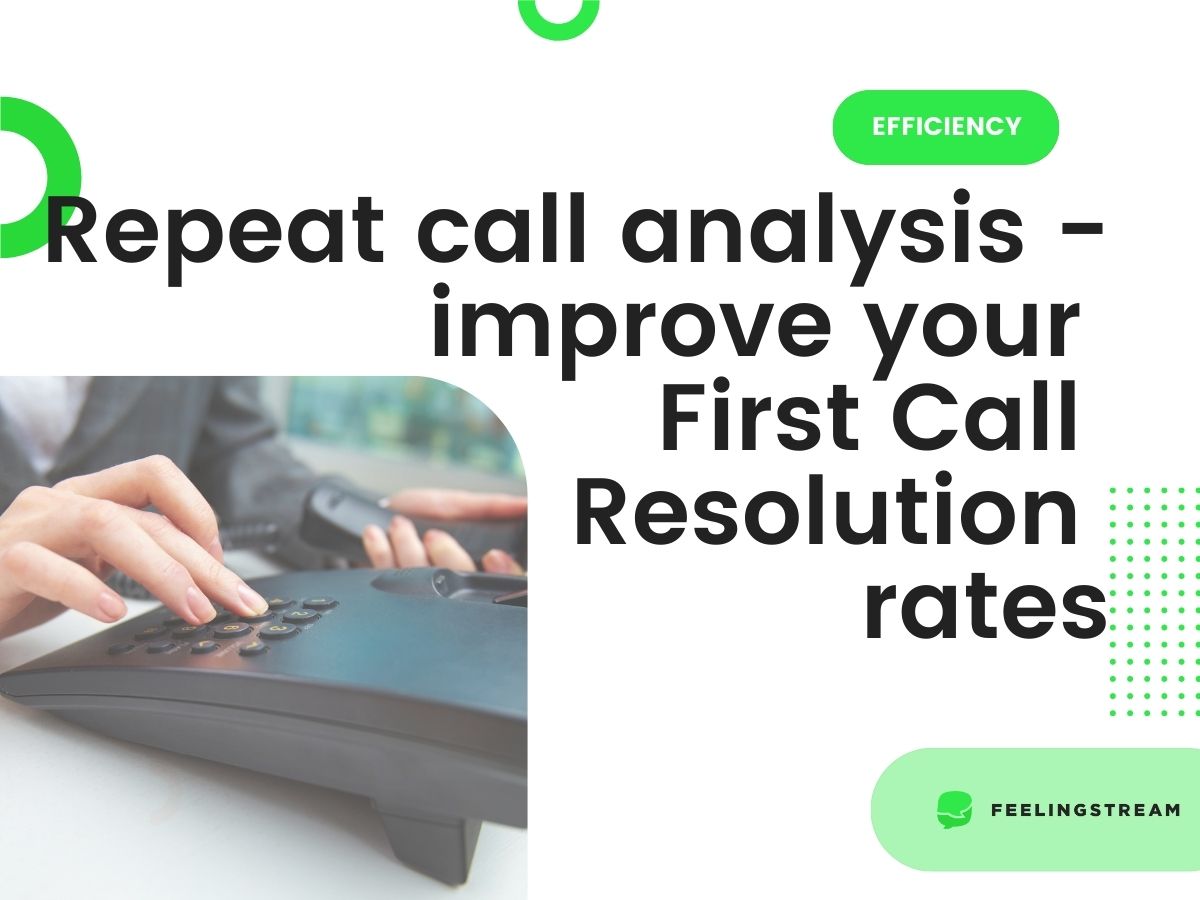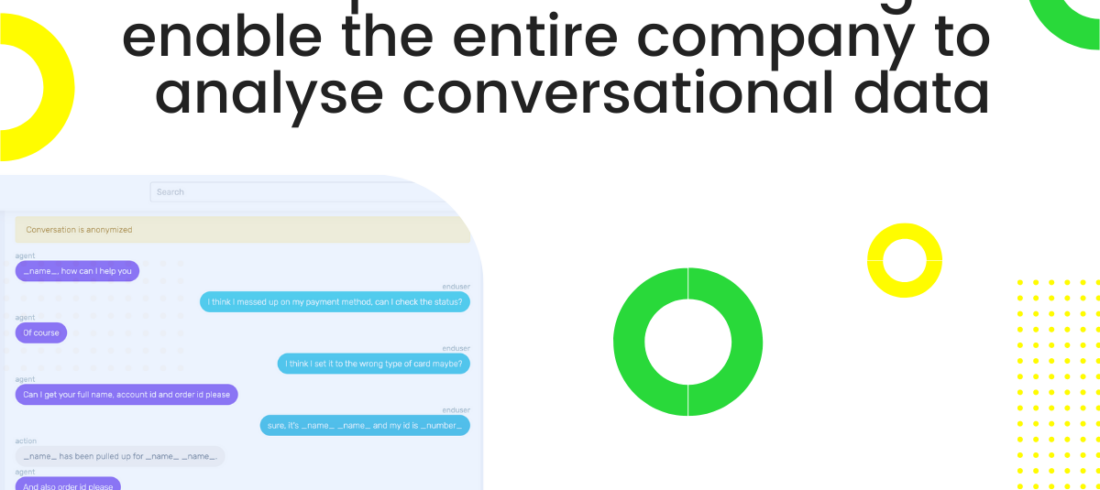Measuring First Call Resolution is a must for call centres these days. However, gathering valid and complete data for repeat call analysis can be a real challenge.
First Call Resolution (FCR) is mainly important for managing costs for the company, but also for customer satisfaction rates. A very small percentage of customers respond to post-contact surveys. Basing FCR rates on such limited data does not give a deep understanding of potential challenges. Repeat callers are even less likely to give feedback that can help improve any services or products.
This is where new technology comes to the rescue. Feelingstream’s call analytics platform now has a new feature to give our clients true visibility of repeat callers. This shows true FCR rates.
In this post, we dig deeper into the challenges of measuring FCR. We also show how our solution makes measuring FCR and repeat call analysis considerably easier.
Difficulties in measuring First Call Resolution
A number of companies find measuring and increasing their First Call Resolution rate a constant battle.
In fact, companies use different solutions for measuring FCR. Some base their data on customer feedback surveys, some on small samples of call quality monitoring. Another option is looking at agents’ notes from the contact.
With the first two options, the data typically does not include all customer contacts. With the third option, the FCR rate is based on customer service agents’ own perception. It’s not objective and may differ from the way that the customer sees things.
Existing measuring methods definitely leave a lot of room for improvement.
Why you have repeat callers and what you can learn from them with repeat call analysis
When analyzing calls from the same customers, the call transcripts often show that the customer felt the need to call in for a second time because something was left unresolved.
A typical example is when customers make repeated calls to clarify their bills each month. This is where call quality managers have to draw their attention to what the customers’ questions are in order to improve information on bills. Product owners can use this insight to update bills and self-service information. Agents can go through training to better explain the charges or bills. This can help avoid repeat calls from the same customers.
However, when agents forget to express empathy, do not show that they are listening (not paraphrasing, interrupting etc), or rush the customer through the call, the customer may feel the need to call again. Such issues can occur in different circumstances. They are most likely to occur in difficult technical situations that customers are unable to solve on their own.
For example, when a customer has issues with their internet connection, there may be a lot of troubleshooting steps that they need to do. If the agent is not patient and does not work through the whole procedure with the customer, finally ensuring that the issue is resolved, this is quite likely to lead to a second call. In those cases, it is very important for call quality managers to work through those calls with their agents. They can help them learn how to better help customers.
Using new technology for repeat call analysis and increasing First Call Resolution
Feelingstream’s call analytics platform does not rely on small samples from feedback surveys or impartial agent feedback from their call notes.
When a customer calls in for a second time during a short time period, the system automatically flags this as a repeat call. This gives a complete overview for proper measuring of First Call Resolution. It is obviously important to measure FCR, but it is even more important to learn from those repeat contacts in order to increase First Contact Resolution. Call quality managers can then analyze the initial and repeat call transcripts to understand what could have been done better. In addition to highlighting repeat calls, Feelingstream’s solution enriches data with different metrics such as topics and sentiment. This makes it even more efficient for analysis.
Taking action based on exact data
From a business perspective, Feelingstream makes it possible to see which calls reached First Call Resolution (great, this is what you want to aim for!), which got a repeat call from the same customer within the same day (not good, needs analysis and work), and which were repeated multiple times (very bad, check the reason right away!).
Training agents and improving processes based on the information learned from repeat callers can make customer service operations more effective (lower costs 5-25%) and improve customer experience (NPS growth 5-25%).
Working towards change
Our platform gives our clients the option to review repeat calls based on different time periods. We recommend reviewing same-day callbacks and rolling 7-day callbacks. The call quality managers can also use other time filters based on their needs.
Improving First Contact Resolution can only happen via eliminating the need for a repeat call as well as training agents based on this knowledge. Such efforts together can make a huge difference.
In our next blog post, we go into more depth about how you can detect and eliminate repeat calls on the same issue.
If you would like to learn more about Feelingstream’s platform and the new First Contact Resolution feature, get in touch. Also, read more about increasing efficiency in general.




